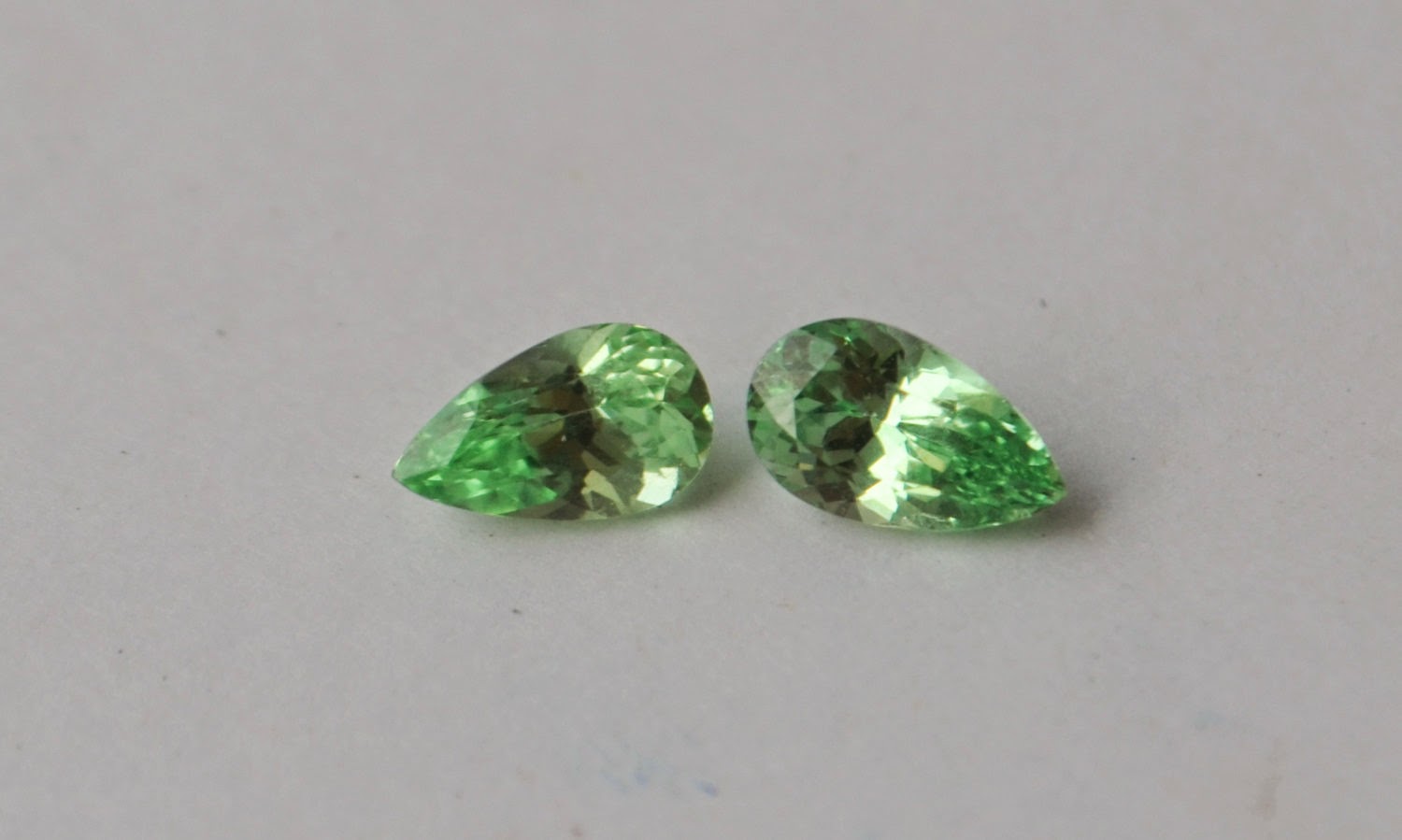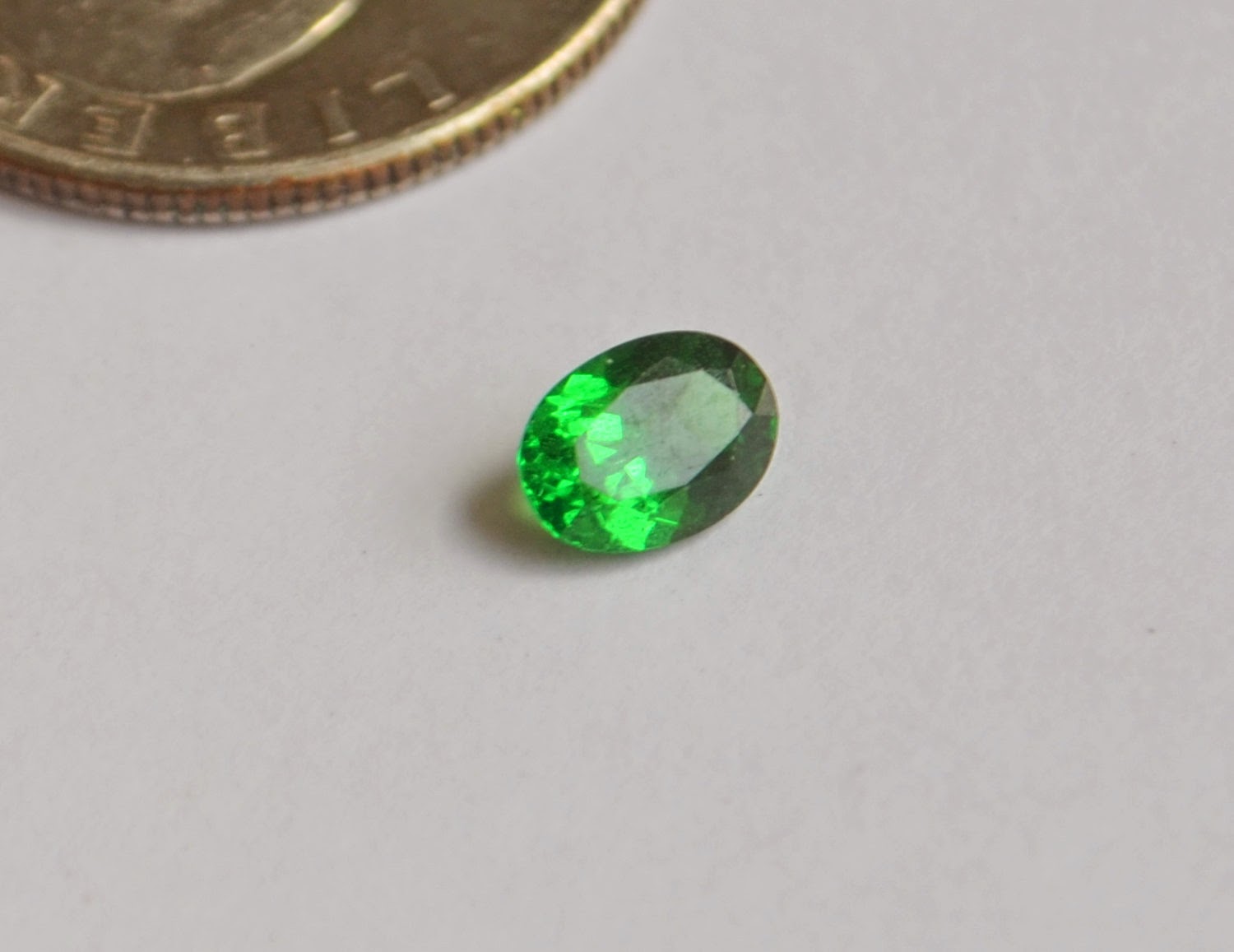Why have Mandarin Garnet, Tsavorite Garnet, and Mahenge Spinel Become so Expensive?
A couple of months ago, I saw a discussion on PriceScope about availability of Tsavorite and Mint Garnet, Mandarin and Spessartite Garnet, as well as Mahenge Spinel, all of which come from the same regions in Tanzania and Kenya. As a vendor, I can’t post on PS – which is a good idea by the way – but the question was an interesting one so I want to post my two cents here on my blog.
 |
| Mint Garnet |
As one reader on PriceScope commented, it is certainly true that worldwide demand for these gems, especially demand in China, has grown exponentially. This is particularly true for pink spinel, less so for Mandarin garnet, which is not as popular a color in the east. Pink is considered he most popular at the moment (mainly in the form of tourmaline), then green and other colors, then oranges and yellow.
 |
It is also true that supplies, at least at the moment, are limited. I say "at the moment" because as every gem dealer knows. one deposit gets used up, but another discovery may be around the corner. Many areas around the Mozambique belt (Kenya, Tanzania, Mozambique) are unexplored, and one never knows what turns up where. The Mahenge valley has been sifted through fairly well from one end to another with the yield being small and lighter colored, Tsavorite production is down, by estimates, about 90%.
 |
| Pink Mahenge Spinel |
Production, however, cannot strictly be measured in terms of availability. Production can be down because of fuel and explosives or tool shortages as well. Most African nations are poor, and depend on influx of foreign cash. That cash, in turn, can vanish at a moment's notice if it is needed elsewhere, so from what I have heard, foreign investors familiar with local culture never simply pay up front. They stay in the area and supervise production for the duration of the investment. The following relevant story was related to me by my geologist friend Jochen Hintze. A local had told him that there was a deposit of a particular gemstone that couldn't be mined because of a shortage of money. So Jochen offered to invest but only if he was brought to the site to inspect it, stayed in the mine during production, and would receive 50% of the material that was found. After some back and forth the terms were agreed to and he was taken to the location of the mine (many such locations are kept secret among locals). The journey required a jeep and one day's travel. When they arrived at the top of the mine shaft, Jochen was told that he could not go inside. He asked why and was told that there was no fuel to start the compressors that push air into the mine, so there was a danger of suffocation. Jochen was exasperated. It would have been easy for him to just bring the fuel and pay for it. But he didn't want to go back a second time, and so the deal fell through. Whatever pretties are down in that mine, they are probably still there.
This story, I am told, is fairly typical for the production problems encountered in these regions.
Of particular interest is also the story of the Loliondo mines in Tanzania, which produce Spessartite as well as particularly strong and beautiful colors of Mandarin garnet (the more fanta colored version of spessartite). When the gems were first discovered above ground (this is an area in which gems can be mined at the surface, so technically there is no "mine"), production was good. At one point, a woman the locals call "six fingered mama" bought the rights to dig in the area, but the local tribe, the Masai, prevented her from exercising her rights. Gunfights ensured and some people died. As a result, the local government forbade any further mining in the area, and so there are no more Spessartites until further notice. This has gone on for some time now, a couple of years at least, and there is only a little bit of illegal mining here and there. Until the situation is resolved - if it is ever resolved - there will not be any Spessartite hitting the market. Consequently, there is a crunch, and prices have shot up.



